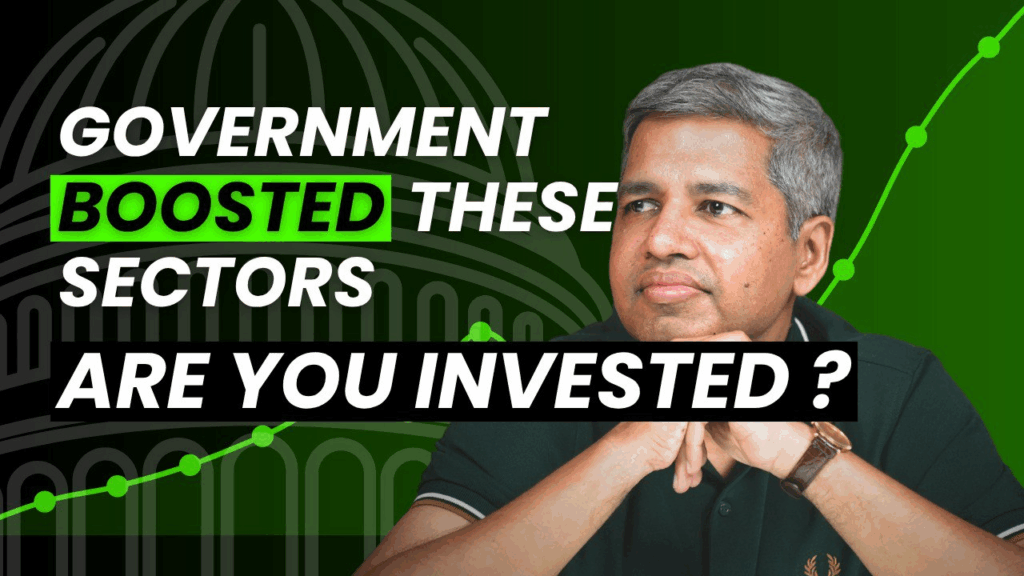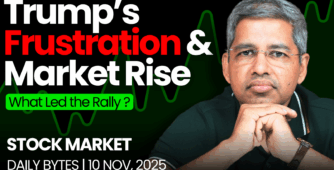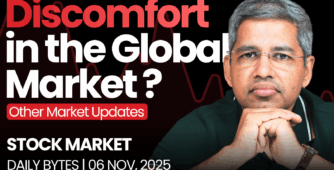Where is the market headed?
It was a surprisingly calm day, considering the strikes on Iran’s nuclear sites by the US over the weekend. Many expected significant market disruption on Monday, with oil surging 6–8%, gold rising sharply, and equities falling. However, none of that materialised—perhaps the markets viewed it as a de-escalation rather than a provocation.
From an Indian investor’s perspective, the absence of an oil price shock is a relief. While concerns about Iran possibly blocking the Strait of Hormuz persist, that scenario now appears less likely, keeping $100 oil at bay—for the time being.
Market Overview
Nifty saw a strong upward move on Friday, but today, despite weekend tensions, it opened lower. Throughout the session, it traded within Friday’s range and ultimately closed about 140 points down—roughly half a percent lower than the previous close.
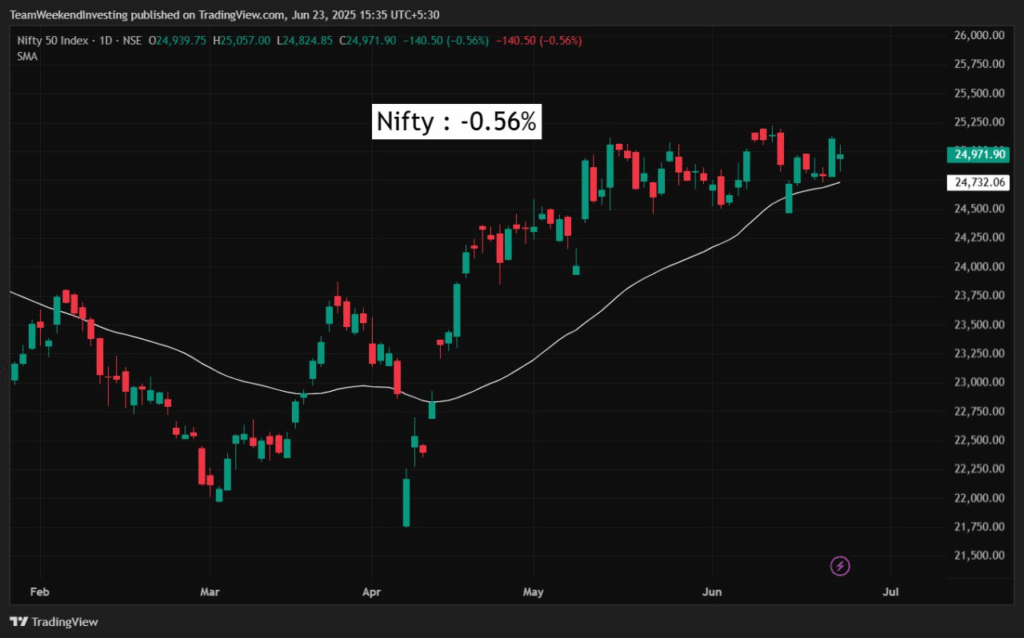
Nifty Next 50
Nifty Junior also opened lower today but managed to recover and closed almost flat, registering a negligible change of just 0.07% from Friday’s close.
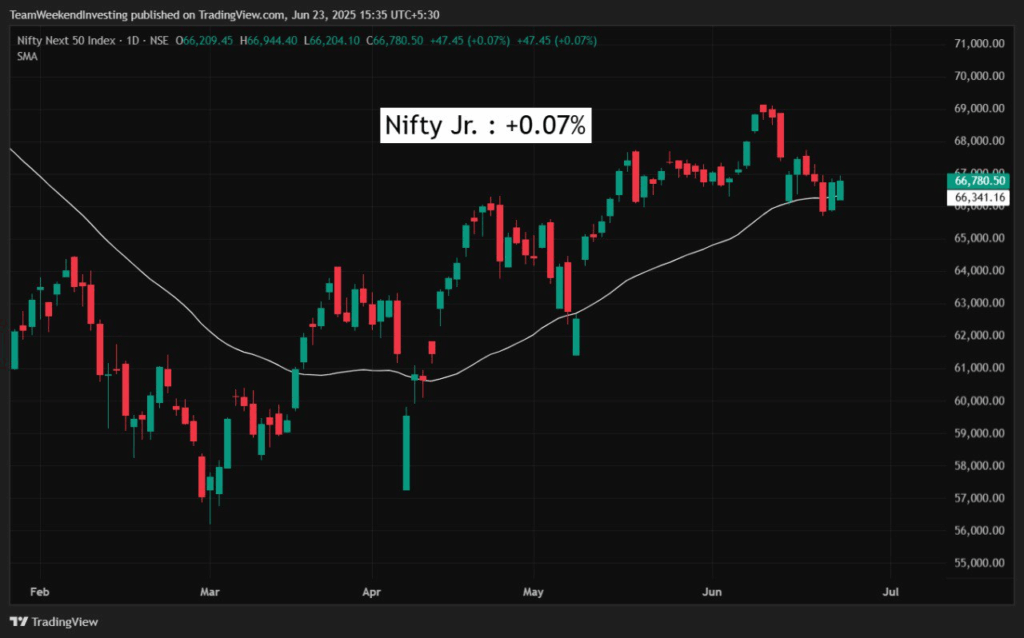
Nifty Mid and Small Cap
Mid caps ended the day with a gain of 0.4% over Friday’s close, showing encouraging strength on the charts.
Small caps performed even better, rising by 0.77%, indicating continued positive sentiment in the broader market.

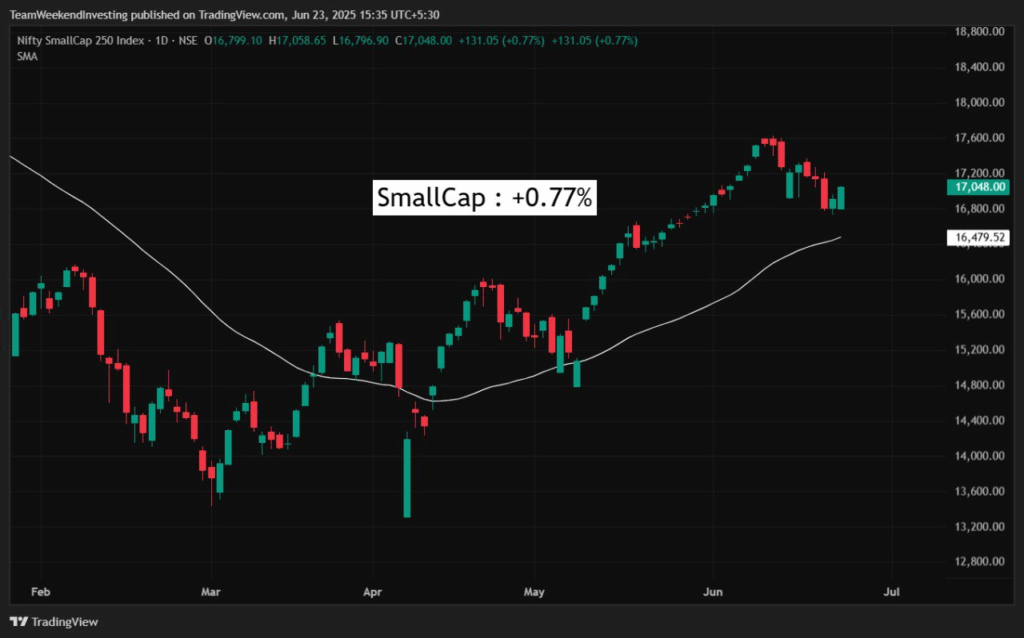
Bank Nifty
Bank nifty was down 0.34%

GOLD
Gold remained largely flat today, ending with a marginal move of just 0.12%.
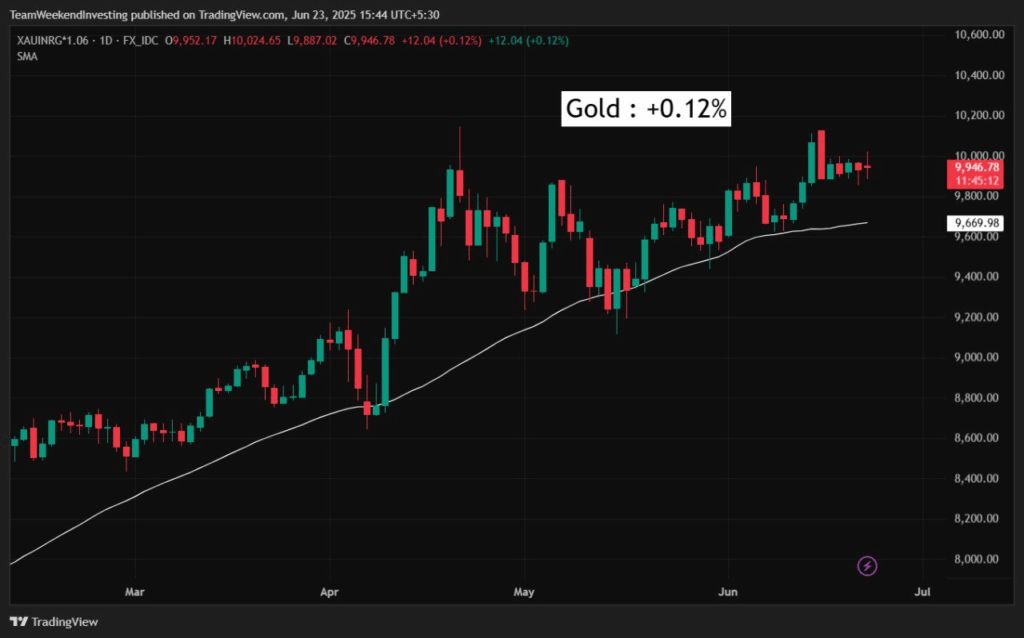
Advance Decline Ratio
The most encouraging aspect of the day was the recovery in market breadth. While the session began with significantly higher declines and subdued advances, investor confidence steadily improved. By the end of the day, the advance-decline ratio had reversed to 276 advances versus 223 declines—a clear sign of intraday strength building up across the broader market.
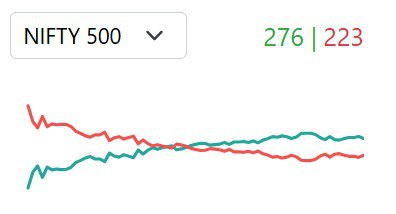
Heat Maps
It was a mixed day across sectors. Banking and financial stocks saw a decent performance, but IT, autos, FMCG, and infrastructure names like L&T were down. Despite rising oil prices, Reliance also closed lower.
In the Nifty Next 50 space, stocks like IRFC, Chola, and Havells posted gains. The broader trend indicates that mid-caps and select small-caps are gradually joining the rally alongside Nifty50 stocks. However, stocks such as Siemens, United Spirits, Info Edge (Naukri), Bosch, and Eicher Motors witnessed some declines.
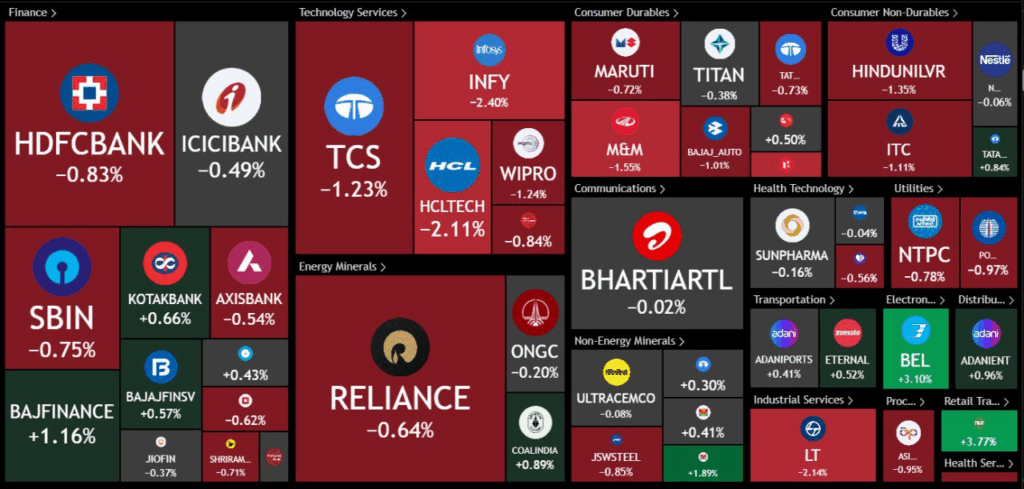
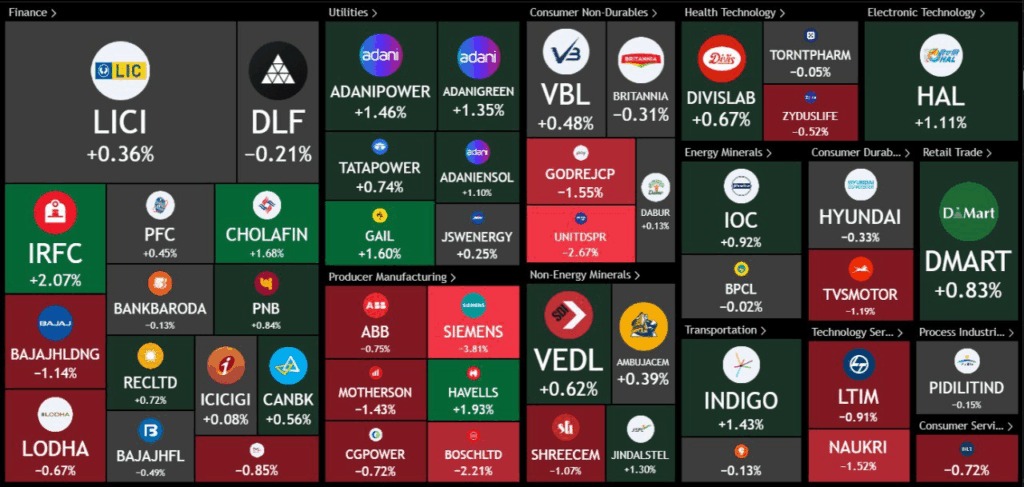
Sectoral Overview
In today’s sectoral trends, Nifty Media surged 4.3%, driven primarily by Zee Entertainment. India Defense stocks gained 2.14% amid ongoing geopolitical tensions and expectations of increased defence orders. Capital markets also rose 1.9%, continuing their strong pattern on positive days. Real estate, central PSUs, and metals posted moderate gains, while sectors like autos, FMCG, and IT were in the red. Notably, FMCG has been the worst performer over the past month, down 4%. Over the past year, defense and capital markets have led with gains of 28% and 65%, respectively and the worst-performing sectors have been Nifty Media, Energy, and Real Estate.
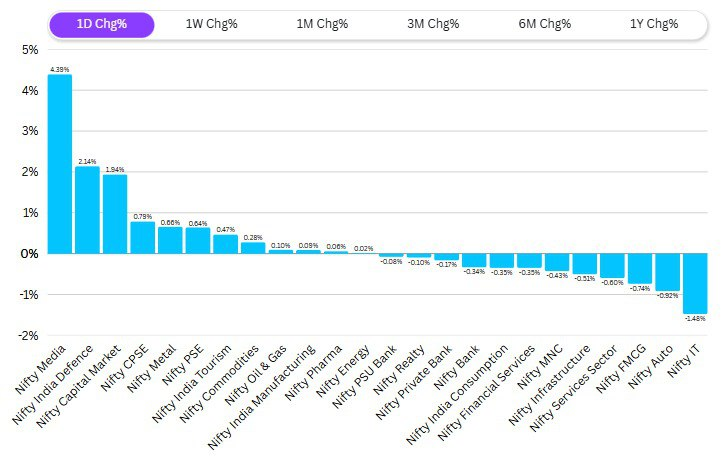
Sector of the Day
Nifty Media Index
Zee Entertainment surged 12%, while Network18 rose 4%, with Nazara, Dish TV, and PVR also posting solid gains—driving strong momentum in the media sector. The chart looks promising, with recent highs being taken out, signalling a potential breakout.
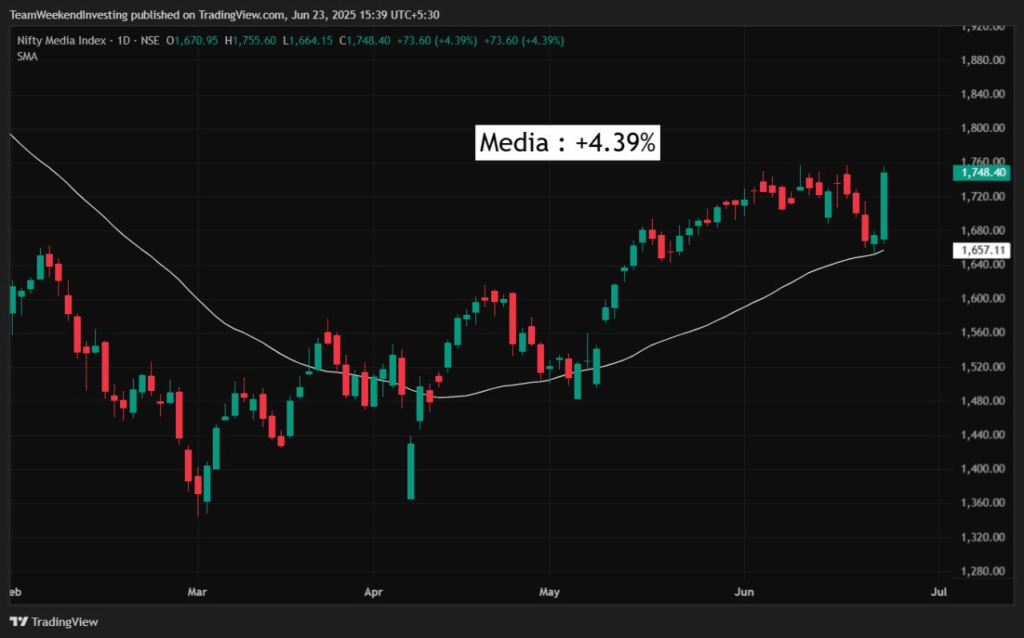
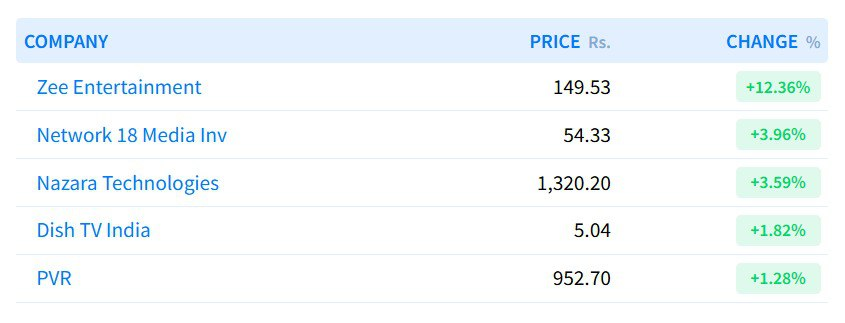
Story of the Day: Government-Led Investment Themes and What Lies Ahead
Over the past two decades, market participants have largely tracked consumption and financials—like consumer goods and banking stocks—to identify trends. However, many have faced losses in the past few years by betting on new-age private sector stocks such as Paytm or Ola, which capitalised on brand popularity but failed to deliver strong fundamentals. In contrast, the real momentum has come from government-led investments, which have not only driven public spending but also catalysed private sector growth through PSUs, CPSEs, PSU banks, and initiatives like the PLI scheme.
In recent years, the Indian government has stepped up as a key investor and growth driver across sectors. Whether it’s in the form of direct capex by government institutions or regulatory incentives, this leadership has significantly reshaped market performance. Notably, gold has seen a global surge, with central bank purchases doubling from 500 to over 1,000 tonnes annually.
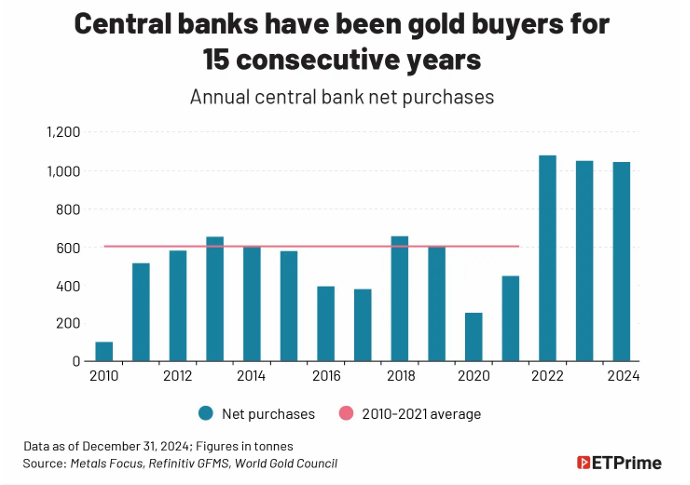
Domestically, BSE’s Industrial Index and capital goods stocks have reflected this investment surge.
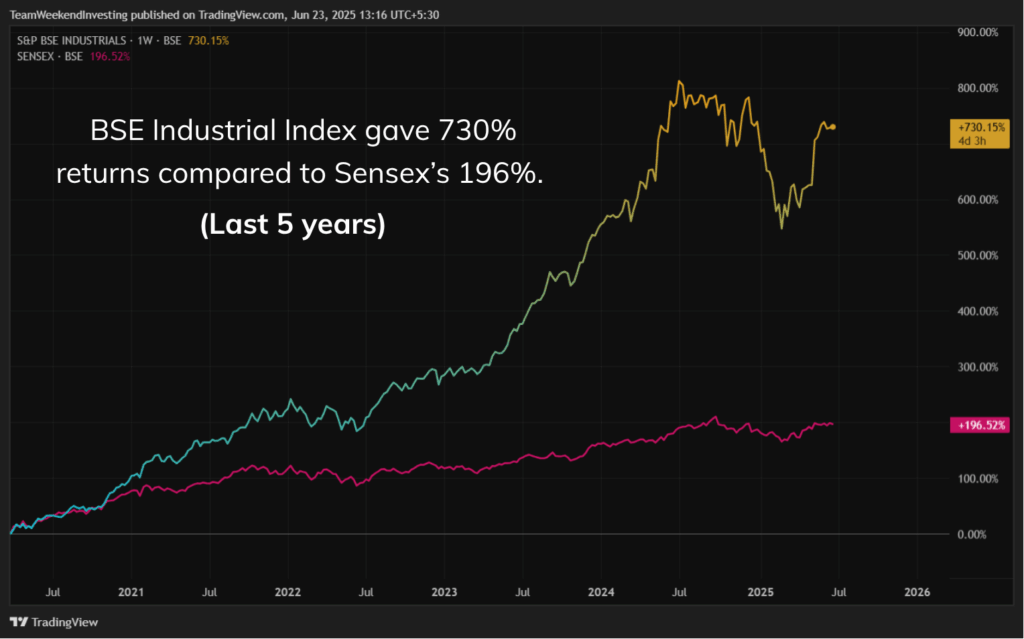
Simultaneously, PSU banks have cleaned up balance sheets and outperformed benchmarks.
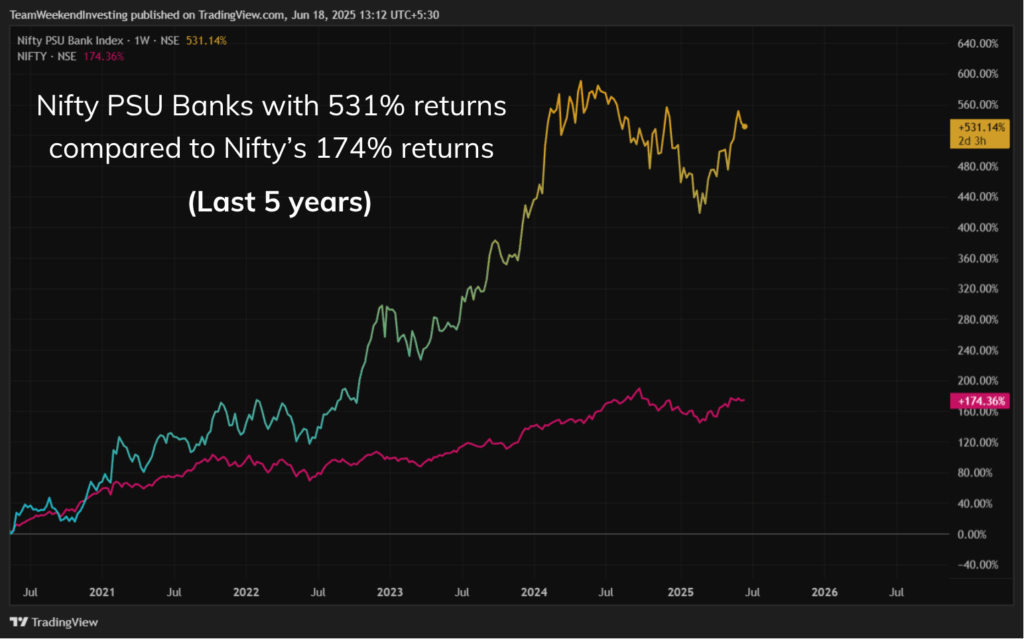
In contrast, some sectors have lagged.
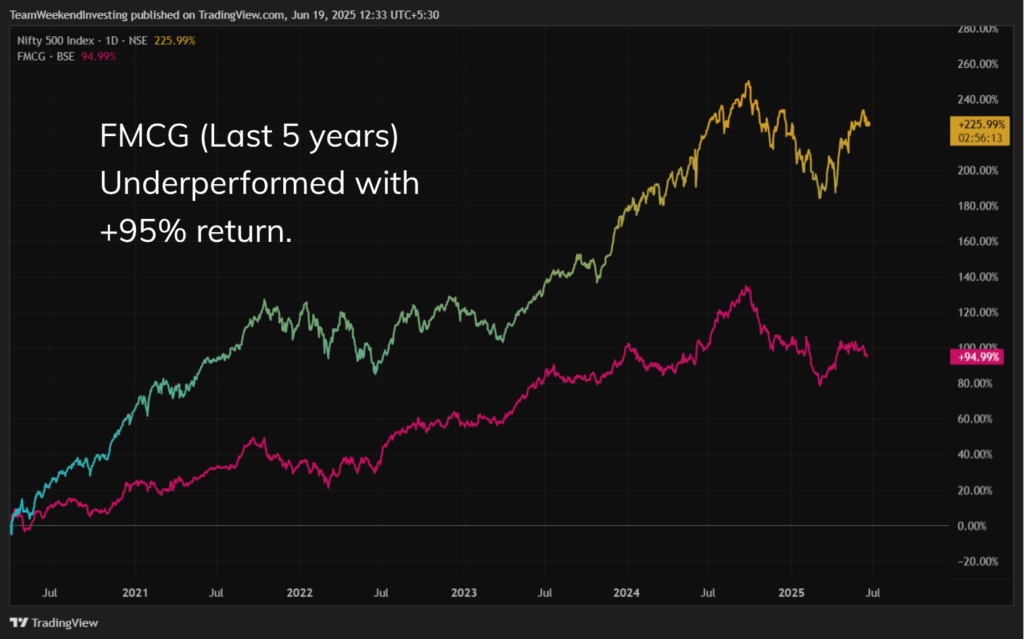
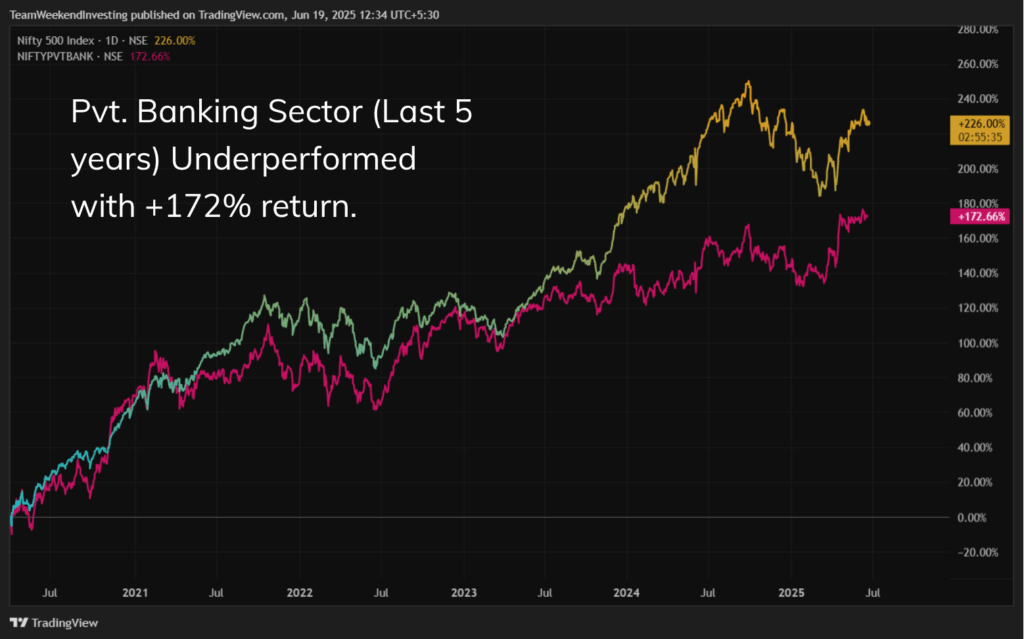
FMCG, media, and private banking have underperformed (see the images below) when compared to the broader Nifty 500, while sectors aligned with government focus—defense, real estate, infrastructure, renewable energy, EVs, and railways—have created massive value. This divergence underscores how government spending, reforms, and schemes like 100% FDI in renewables or PLI in manufacturing are fueling India’s growth even as global economies struggle.
A key reason behind the government’s aggressive spending has been to mitigate the post-pandemic economic fallout. Despite providing monthly food support to over 80 crore citizens, India has maintained fiscal discipline and even managed to attract global supply chain shifts away from China. The result? A buoyant stock market and a parallel bull run in gold—both powered by government action.
But one must recognise that market themes are dynamic. Government focus and investor attention can shift swiftly from one sector to another. Chasing past winners often results in late entries and exits, leading to poor returns and frustration. Momentum investing addresses this flaw—removing emotions and ensuring timely decisions. When defense stops performing, for example, a momentum strategy exits without hesitation, while human investors may linger, hoping for a rebound.
As India moves forward, the question remains: Will government spending continue to lead market trends? And which sectors will emerge next? Let the momentum portfolios reflect the changing leadership as fresh themes unfold.

